In the modern business landscape, agility and innovation reign supreme. Change is no longer seen as a sporadic event, but the pulse that keeps organization’ lifeline beating.
However, while change is the catalyst for innovation, its full potential remains untapped without change management.
In the absence of a structured approach, resistance blooms, morale dips, counterproductive silos emerge, and the very essence and importance of change management becomes diluted.
Organizations that underestimate the value and importance of organizational change management often find themselves grappling with the aftermath of mismanaged transitions, struggling to regain lost momentum and productivity. On the contrary, organizations that prioritize change management as an integral part of their internal processes tend to navigate transitions more smoothly, sustain momentum, and drive organizational success and outcomes.
Below, we will at the top reasons why change management is so necessary and valuable in any effective organizational change management process..
The Importance of Change Management
The business case for organizational change management
Change management is the application of processes, methods, body of knowledge, skills and experience to bring about the people’s side of change and therefore optimize the benefits of an initiative.
Managing change, at its core, is about getting people to change their behavior. It is a necessary step toward thriving amidst a constant state of change.
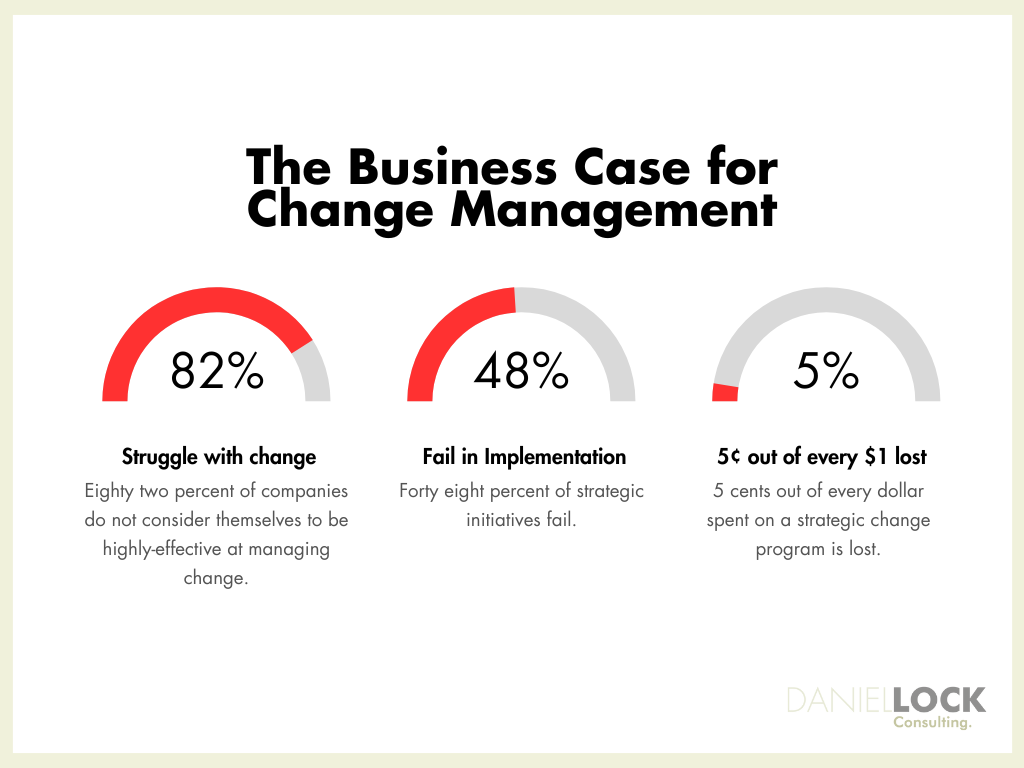
The triad of change management value
The value embedded within a change management strategy encompasses three vital dimensions:
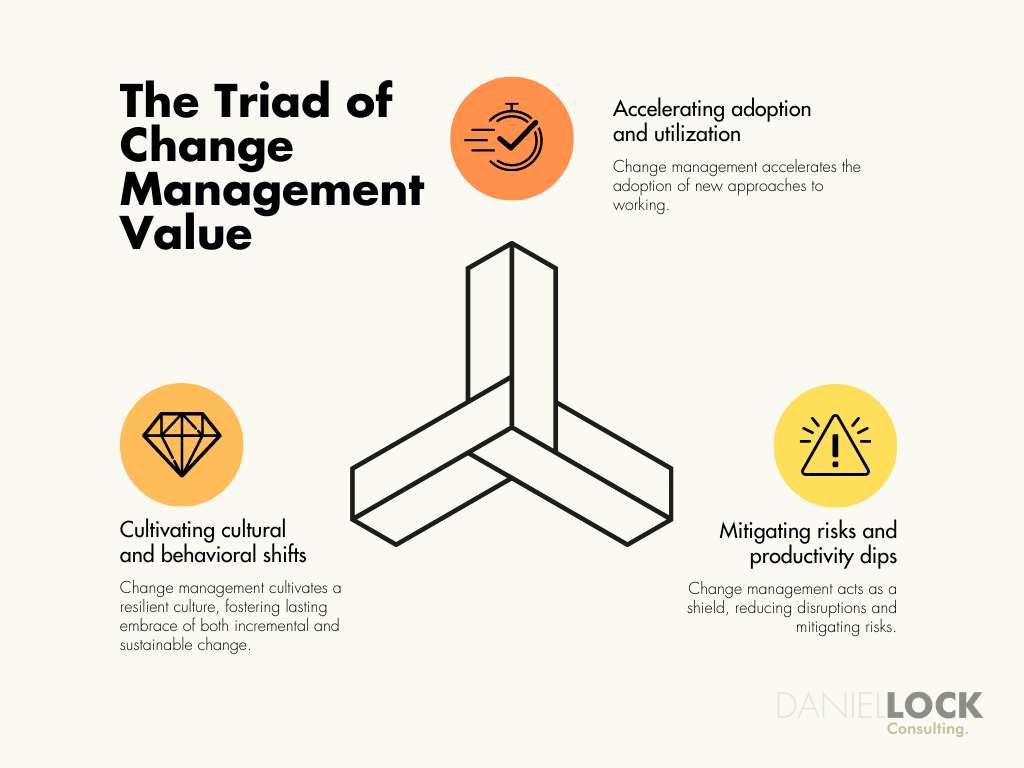
-
Accelerating Adoption and Utilization:
When implementing change, the process of change management acts as an accelerator, expediting the adoption and seamless integration of novel approaches. This velocity ensures that organizations swiftly embrace new ways of working, transforming abstract plans into tangible realities.
-
Mitigating Risks and Productivity Dips:
Amid change, productivity can often experience a temporary decline as individuals acclimate to new methodologies of a change initiative. Here, change management emerges as a shield, mitigating the impact of this dip. Through comprehensive support, targeted training, and well-defined roadmaps, it empowers teams to navigate transitions with minimal disruption.
-
Cultivating Cultural and Behavioral Shifts:
Beyond immediate changes, change management plays the role of a cultivator, shaping the culture and behavior of an organization. It fosters an environment where change is not just accepted but embraced, laying the foundation for an enduring culture of resilience not just for incremental change, but also for a long-term sustainable change.
Furthermore, the merits of change initiatives can be gauged through the following lenses:
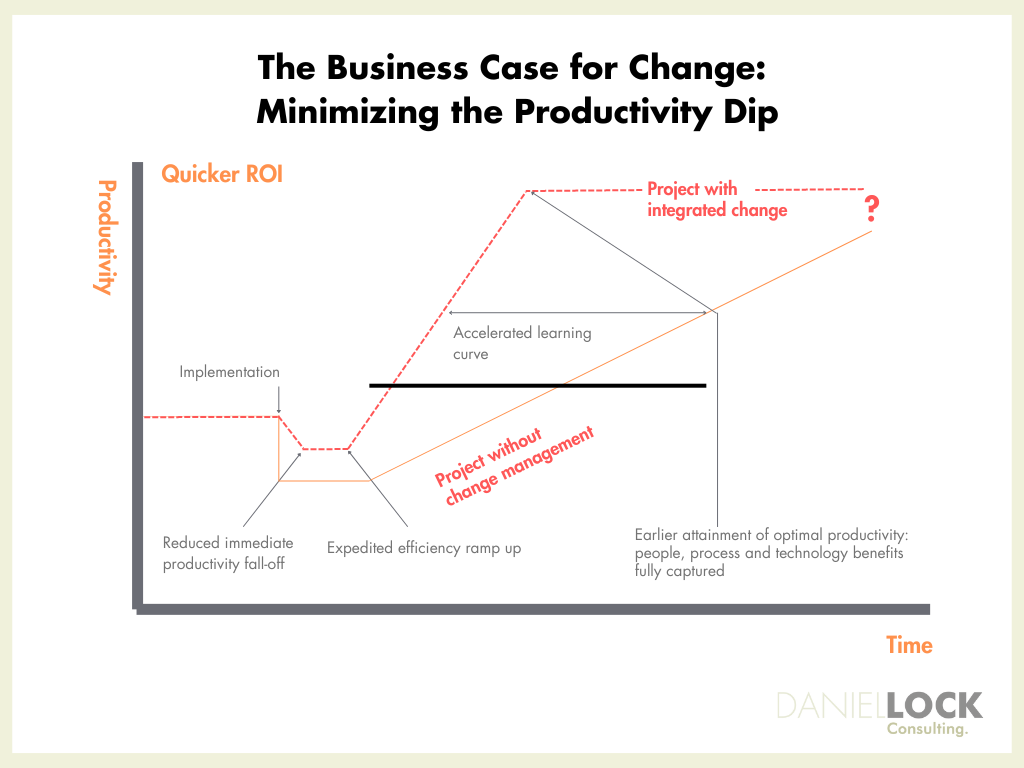
-
Speed of Adoption: How swiftly change is adopted into the organization and how well the project adheres to schedules.
-
Ultilization rate: How well the organization’s workforce participate in using the new process and/or system.
-
Skills level: how well people acquire the required skill levels or achieve expected performance levels in the new environment.
In mastering these facets of business processes, change management evolves from a concept into a potent tool that empowers companies to embrace and manage change not merely as a necessity, but as a catalyst for enduring success.
Accelerating Adoption and Utilization
A brilliant strategy is only as good as its implementation, and this is where many organizations stumble.
According to an IBM Change Management Study, Making change work… while the work keeps changing, nearly half of all attempts to bring about organizational change fall short of delivering even half of their anticipated outcomes.
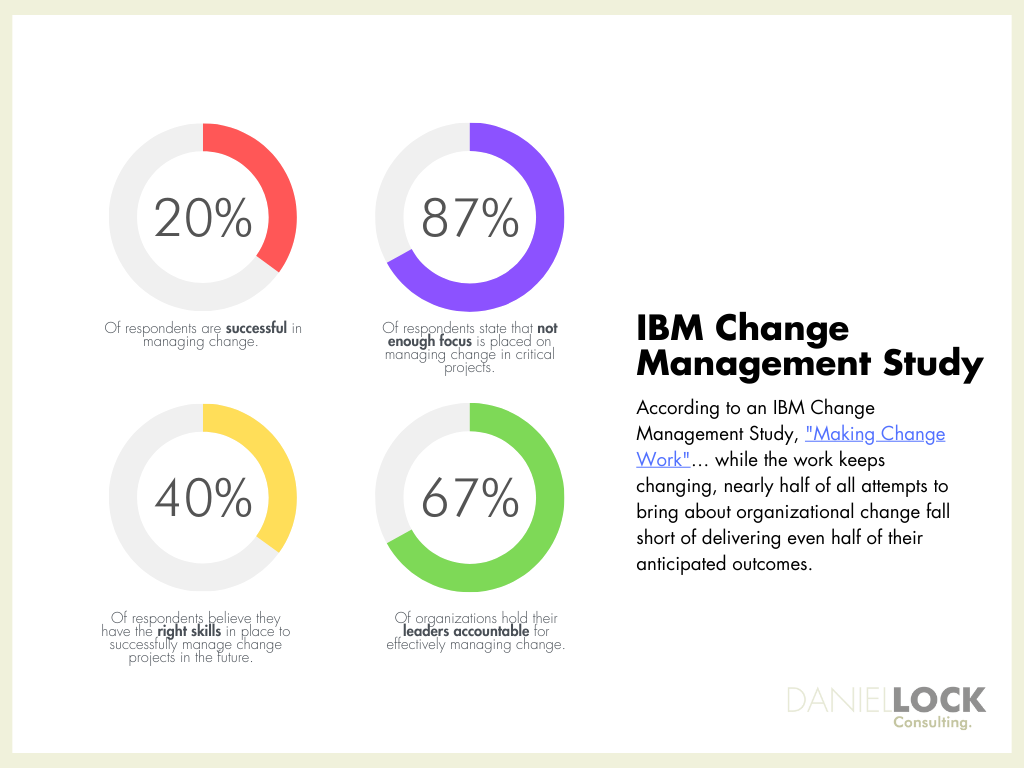
The strength of effective organizational change management also lies in its ability to propel initiatives forward and ensure that business strategies are effectively translated into tangible results for the company. By hastening the speed at which new ideas and ways of working are embraced and integrated, it becomes the catalyst that turns plans into reality.
Maximizing ROI and speed of utilization in business processes
Change isn’t a gamble. It’s a calculated investment that can yield substantial results for any organization.
By fostering a shared understanding of the purpose and objectives to manage change, a good change process can help ensure that every individual’s efforts are directed towards a unified outcome. Moreover, it helps accelerate the journey managing change from initiation to value realization.
Through effective communication, targeted training, and proactive support, it minimizes the learning curve associated with the changes. Employees swiftly adapt to new business processes, new tools and new technologies, enabling the organization to swiftly work effectively capitalize on the anticipated benefits.
This acceleration directly translates to a quicker realization of ROI, reducing costs, as the transition phase is optimized for efficiency.
Helping people adopt to new ways of working
Adopting new ways of working can be a daunting task, especially when established routines are disrupted.
Here, the change management process steps in to ease the journey from reluctance to readiness.
In essence, a sound change management plan expedites the adoption of new business models, business processes,, technologies, and structure, all while addressing the human element and company culture behind an organizational change.
Change Management Process and Adopting to New Ways of Working
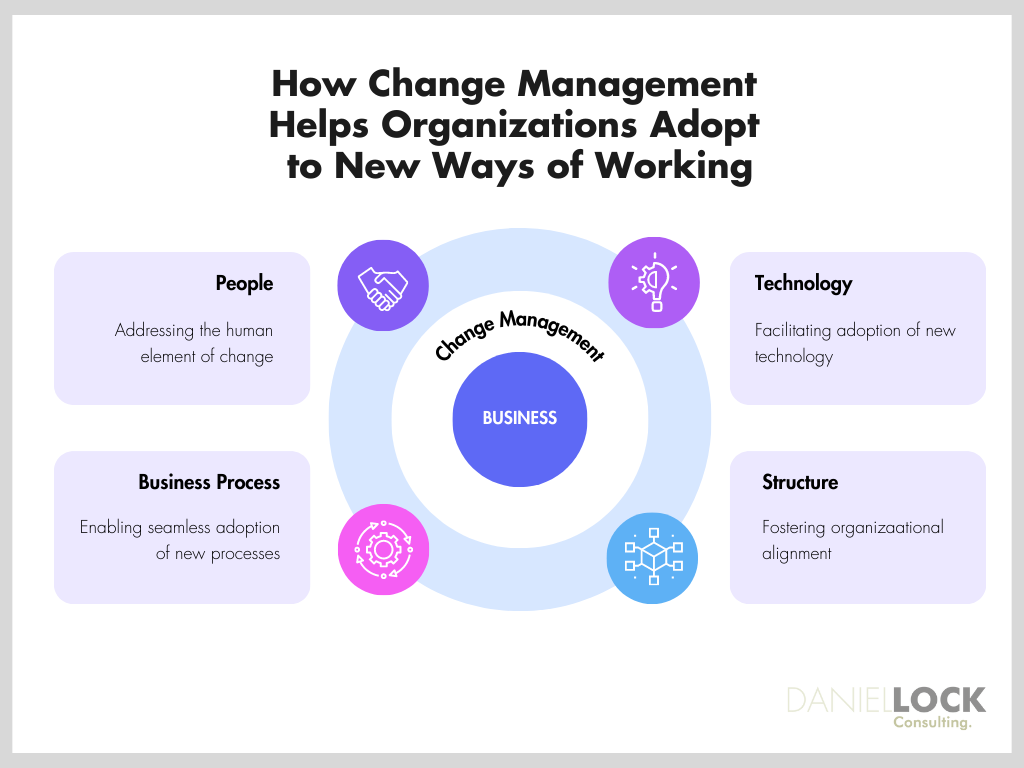
-
People: Addressing the human element
Organizational change management recognizes the human factor and takes a proactive approach to address it. By involving employees from the outset, explaining the “why” behind the change, and engaging them in decision-making, change management instills a sense of ownership and enthusiasm.
-
Process: Enabling seamless adoption of new processes
Change management’s role in facilitating seamless adoption revolves around meticulous planning and strategic execution. It takes a proactive approach by thoroughly understanding the intricacies of the new business processes, breaking them down into comprehensible components.
-
Technology: Facilitating adoption of new technologies
By ensuring that new technology are communicated clearly and employees are trained to execute them, a good change management process facilitates a sense of ownership and familiarity. This involvement dispels apprehension and paves the way for a smoother transition and digital transformation.
-
Structure: Fostering alignment at the organizational level
Change management helps ensure that any structural change is integrated seamlessly – engaging not just the executive echelons but also middle management and employees across all tiers. This dynamic approach works to clarify how new roles, responsibilities, and relationships fit into the bigger picture.
Mitigating Risks and Reducing the Productivity Dip
Simultaneously, an effective change management process is also the shield that guards against the jarring risks and dip in productivity that often accompanies change.
This dual superpower – accelerating adoption and curbing productivity slumps – is the golden ticket that businesses need.
Avoiding project failures
Not all projects are destined for greatness. Some hit the wall. But what if you could predict the roadblocks?
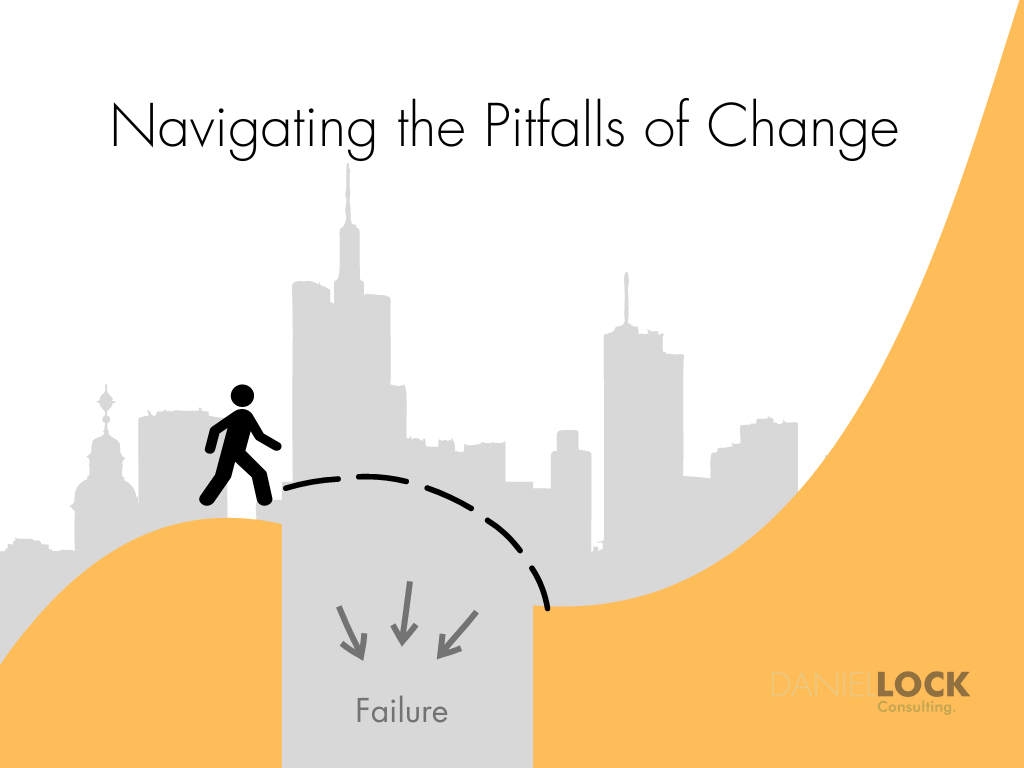
Change and project management, is not just a safety net against failures. It’s a preemptive guardrail that helps any company navigate around pitfalls. Through proactive planning and targeted strategies, a sound change and project management process develops a roadmap that guides a change initiative away from the path of failure.
By fostering collaboration among stakeholders, facilitating open communication, and addressing concerns promptly, change management can help create an environment where challenges are resolved before they escalate into project-threatening issues. With it and project manager’s vigilant oversight, projects are not only shielded from failure but also positioned for resounding success.
Mitigating risks
The value of change management in mitigating risks lies in its ability to strategically manage the implications of change across the entire organization itself. While its primary focus is on people, it also extends to supporting the successful implementation of business strategies or initiatives. This comprehensive approach to project management takes into account various critical aspects, including people, process, technology, and structure.

By effectively preparing and aligning the workforce for change through regular communication and timely training, you not only mitigate risks but also have the opportunity to eliminate them entirely from your own, new business models and internal processes.
This strategic approach to mitigating risks then bolsters the organization’s ability to navigate challenges swiftly and effectively.
Reducing productivity dips
When organizations implement change (point A on the graph), they often encounter a period of decreased performance. This decline is attributed to reduced productivity caused by employees’ lack of readiness for the change, or employee resistance to organizational changes, whether due to confusion or resistance.

This ‘performance dip’ can decrease a business’ return on investment and impact the bottom line through loss of revenue, rework, employee absenteeism and poor productivity.
However, it’s essential to note that while some change initiatives may result in a temporary productivity decrease, an effective change management program can mitigate significant impact of this dip and concurrently lower the associated risks tied to the change initiative.
By training employees, providing clear guidance, and offering support during the change process, a sound change strategy ensures that the workforce remains engaged and effective. In essence, it serves as an organization’s guardian of productivity, maintaining a smooth workflow even as the organization evolves.
Cultivating Cultural and Behavioral Shifts
Ultimately, a change manager’s primary focus is to change people’s behavior.
By encouraging new mindsets, values, and attitudes that align with strategic goals, a well-implemented organizational change management infuses employees with a renewed sense of purpose, preparing the business for long-term sustainable change.
Overcoming resistance to change
Change triggers a natural response: fear and uncertainty. However, a sound change management plan confronts these emotions head-on.
Change management’s strategic approach anticipates resistance and crafts tailored strategies to overcome it. Through empathy, education, and involvement of stakeholders at every level, it transforms resistance into receptivity.
When anxiety is replaced with assurance, individuals embrace the change journey better And when employees see their peers embracing the charge – especially new employees – they’re more likely to be motivated to follow suit.
Embracing a change-ready culture
Beyond procedural adjustments, effective change management delves into the heart of the matter: changing the cultural construct in which we all work.
By aligning cultural shifts with strategic objectives, change management reshapes beliefs, values, and norms. Through open communication, positive role modeling, and recognition of desired behaviors, it crafts a culture that harmonizes with business goals.
This, in turn, propels initiatives forward with the collective force of an aligned workforce.
Increasing employee morale increased productivity and performance
When employees have a say in decisions, see their contributions acknowledged, and feel like they’re part of something bigger, morale and employee engagement soars.
In a 2010 survey by McKinsey, the success of transformational change projects surged to over 75% when shop floor workers perceived themselves as integral participants in the company’ organizational change process.
 With a good change plan in your toolkit, you’re providing employees with more than just tasks.You’re offering them a voice, a platform to share ideas, and a role in shaping the entire organization’s trajectory.
With a good change plan in your toolkit, you’re providing employees with more than just tasks.You’re offering them a voice, a platform to share ideas, and a role in shaping the entire organization’s trajectory.
Interestingly, the echoes of this empowerment resonate harmoniously with the report by Google in 2010, The Decisive Decade: how the acceleration of ideas will transform the workplace by 2020,.

The study reveals a significant finding: an 81% correlation between collaboration and innovation. When individuals collaborate and share ideas, perspectives, and expertise, they are more likely to generate innovative solutions, drive creativity, and contribute to the overall growth and success of the business.
The beauty of this cultural evolution lies in its sustainability. When people affected by change feel valued and empowered, they pay it forward.
The result? Employee performance that’s not confined by limitations but driven by aspiration. It’s a ripple effect that transforms the workplace into a hub of innovation, collaboration, and creativity.
Empowering change champions
Change doesn’t emerge from thin air. It’s championed by individuals who embrace transformation and inspire others to do the same.
These change champions are the driving force behind a business, pushing the entire organization forward. But their potential is only fully realized through executive support by change managers. By celebrating their efforts, providing them with resources, and recognizing their contributions, change management turns these champions into beacons of enthusiasm and guidance.
Their presence within the organization ensures that the momentum of change is not only maintained but also expanded upon over time amidst internally and externally driven challenges, solidifying the foundation of sustainable transformation.
Conclusion
As we discussed the value and importance of change management, at its core, we discovered how it swiftly bridges the gap between plans and action within an organization.
It creates cultures that are ready for change and helps everyone transition smoothly to new ways of working. Moreover, it acts like a shield, protecting against risks and keeping productivity on track. Finally, it boosts employee happiness, makes them better at their jobs, and empowers those who champion change.
By guiding organizational change with the right approach, change managers can help an organization not just deal with change, but welcome it for a never ending journey of growth, improvement, and lasting success.

